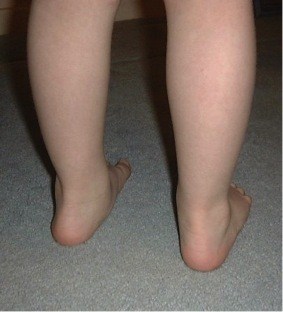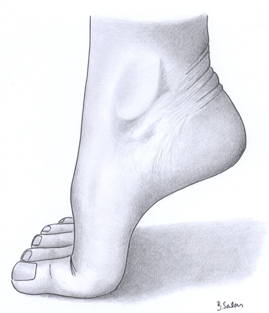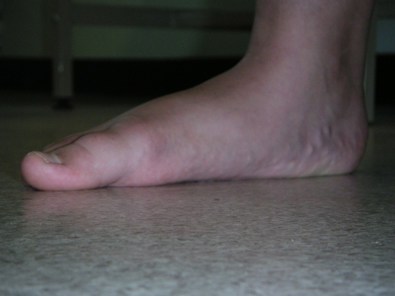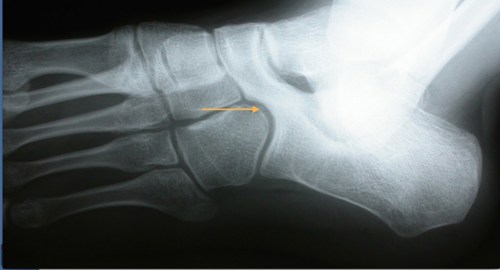Flat Feet
Key points:
- It is common for babies and toddlers to have ‘flat feet’ due to the presence of fatty tissue on the insoles of their feet. Flat feet in babies and toddlers usually resolve by 6 years of age as the longitudinal arch develops.
- Many children present with ‘flexible flat feet’ early in their walking development; most will 'grow out' of it as their walking matures and they develop a longitudinal arch.
- Walking in bare in feet is ideal for promoting foot development. They persist in at least 10% of children, are commonly associated with other features of hypermobility, and are often familial (check parents' feet !).
- Management involves explanation, reassurance and advice regarding appropriate supportive footwear (i.e., supportive heel cup and midfoot support with fastened laces).
- Physiotherapists, orthotists and podiatrists may provide exercises and insoles if problems persist.
The picture below (left) shows bilateral flat feet in a healthy young child with an appropriate medial longitudinal arch present when standing on tip-toe. This variant is called mobile flat feet (or flexible flat feet).


When are flat feet of concern ?
- Absent arch when child stands on tip toes (non-mobile flat feet).
- Asymmetrical changes (i.e., one foot fixed and flat).
- Evidence of pressure on the foot such as blistering / callosities.
- Swelling or stiffness of joints.
- Limping or persistent pain.
- Neurologic exam demonstrates hyperreflexia, hypertonia, or weakness.
- Resulting in pain, or interfering with function (sports or play).
In teenagers with a fixed/painful flat foot, think of tarsal coalition (a congenital condition where bones in the foot are joined together).
Inflammatory arthritis can also cause a painful stiff flat foot. Radiographs can be normal. Referral is required for further investigation.
The indications for referral (to rheumatology or orthopaedics pending your concerns and available referral pathways)
- Joint stiffness or swelling.
- Absence of arch on tiptoe.
- Signs of skin changes from pressure (e.g., blistering).
- Persistent pain.
- Limp or symptoms interfering with function (sport/play).
- Systemic features.
Key conditions to consider include:
- Inflammatory arthritis – joints are stiff, warm or swollen (often the midfoot).
- Tarsal coalition – joints fixed and painful on walking and weightbearing.
Photo below : Stiff Flat Foot due to Inflammatory Arthritis (Juvenile Idiopathic Arthritis).

Photo below : Radiograph showing tarsal coalition with fusion of the calcaneum and navicular bones (arrowed)


